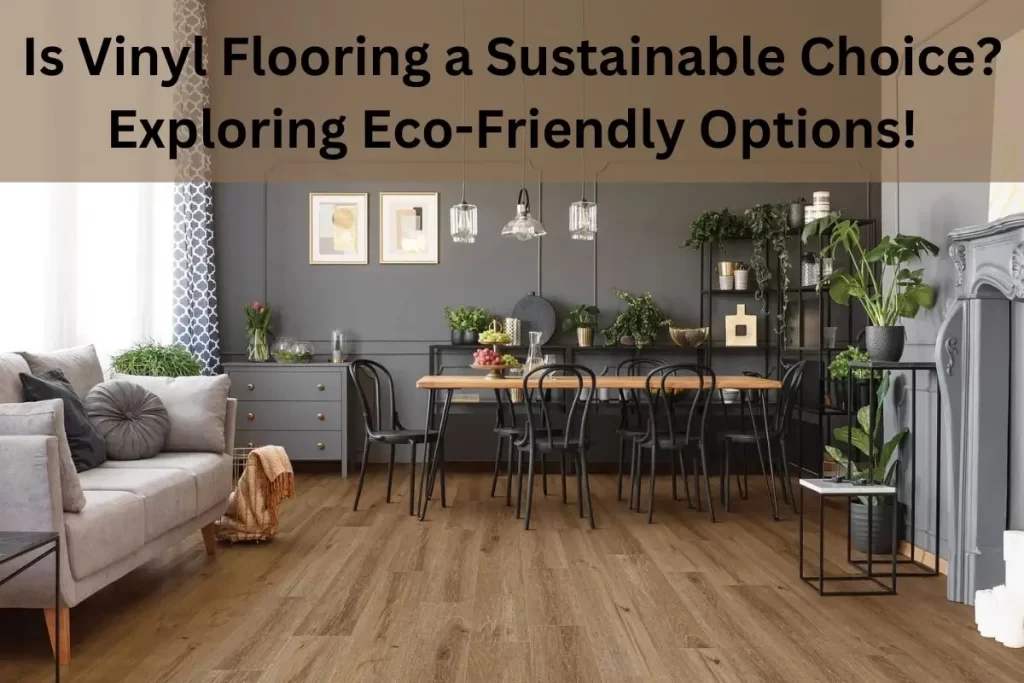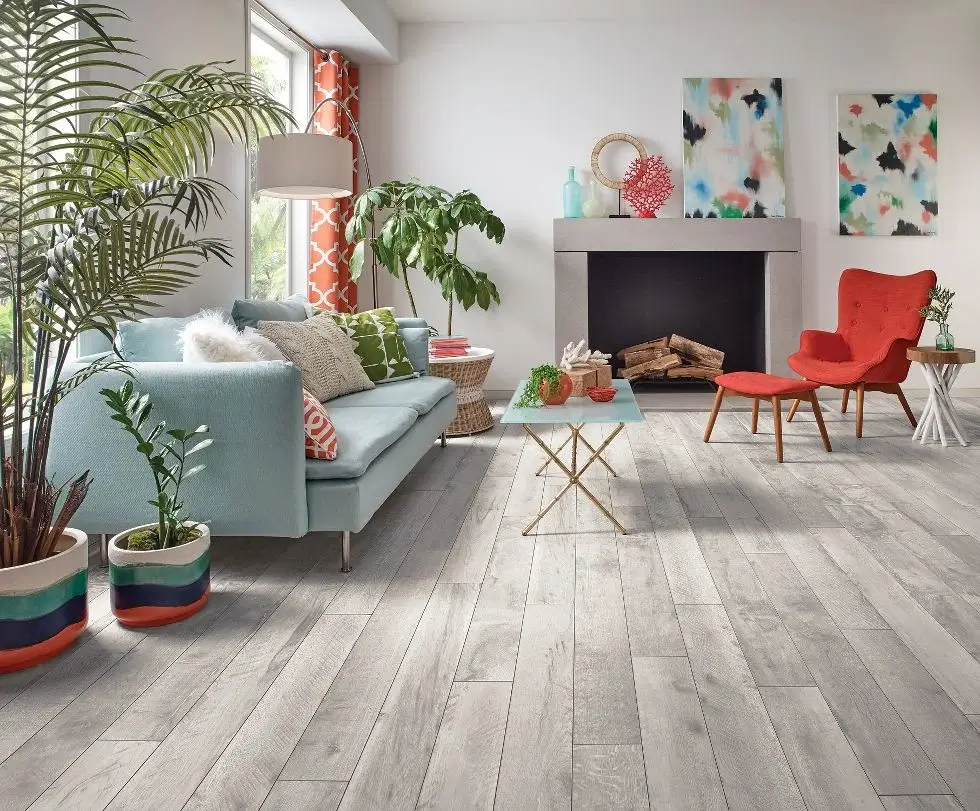Vinyl flooring is a popular choice for its affordability, durability, and versatility, but how sustainable is it? As eco-consciousness grows, the environmental impact of materials like vinyl comes under scrutiny. In this article, we’ll explore whether vinyl flooring can be considered eco-friendly by analyzing its production, recyclability, and impact on indoor air quality. We’ll also compare it to other environmentally-friendly flooring options to help you make an informed decision.
What is Vinyl Flooring Made Of? Understanding Its Composition
Vinyl flooring is composed primarily of polyvinyl chloride (PVC), a type of plastic derived from petroleum. Additional materials like plasticizers, stabilizers, and pigments are included to enhance flexibility, durability, and appearance. The synthetic nature of these materials raises environmental concerns, as PVC is not renewable and takes centuries to decompose. The chemical additives used in vinyl flooring also pose environmental risks, contributing to pollution during manufacturing and disposal. While vinyl is resilient, its non-biodegradable and non-renewable composition makes its sustainability questionable.
The Environmental Impact of Vinyl Flooring Production
The manufacturing process of vinyl flooring is energy-intensive, relying heavily on non-renewable resources like petroleum. During production, harmful chemicals such as chlorine and dioxins are released, which can contaminate air and water supplies. The use of fossil fuels in production also contributes to greenhouse gas emissions. While some companies are working toward greener production processes, the overall environmental impact of vinyl production is significant. Compared to more sustainable materials like wood or bamboo, vinyl’s carbon footprint remains high, making it a less eco-friendly option in this regard.
Longevity of Vinyl Flooring: Does Durability Equal Sustainability?
One of vinyl flooring’s key selling points is its durability, with some high-quality products lasting up to 20 years or more. This longevity reduces the need for frequent replacements, which could be seen as an eco-friendly advantage by lowering waste. Vinyl’s resistance to moisture and stains also makes it a practical choice for high-traffic areas, further extending its lifespan. However, even though it lasts longer, the environmental cost of its production and disposal does not offset the benefits of its durability. Sustainability involves more than just longevity—it also includes the entire lifecycle of the product.
Is Vinyl Flooring Recyclable? Challenges in Reusing Vinyl
Recycling vinyl flooring is a major challenge due to its complex composition, which often includes a mix of synthetic materials that are difficult to separate. While some manufacturers offer take-back programs or recycling initiatives, the infrastructure for vinyl recycling is still limited. Most vinyl flooring ends up in landfills, where it can leach harmful chemicals into the environment as it decomposes. Additionally, post-consumer vinyl is often contaminated with substances that make it difficult to recycle into new products. In terms of sustainability, vinyl lags behind other materials like wood or bamboo, which are far easier to recycle or repurpose.
Indoor Air Quality: Do VOCs from Vinyl Flooring Pose a Health Risk?
One concern with vinyl flooring is the emission of volatile organic compounds (VOCs), which can contribute to poor indoor air quality. Newly installed vinyl can release chemicals like formaldehyde, causing headaches, respiratory issues, or allergic reactions. However, not all vinyl flooring is created equal. Many manufacturers now offer low-VOC or zero-VOC options, which are designed to minimize harmful emissions. If indoor air quality is a priority for you, look for vinyl products with certifications such as GreenGuard or FloorScore, which guarantee low VOC emissions and safer indoor environments.
Comparing Vinyl to Other Eco-Friendly Flooring Options
When it comes to sustainability, vinyl flooring is outperformed by eco-friendly alternatives like cork, bamboo, and reclaimed wood. Cork and bamboo are renewable resources that grow quickly, and reclaimed wood repurposes existing materials, reducing waste. These options are also biodegradable and generally have lower carbon footprints during production. Vinyl, while affordable and durable, is made from non-renewable resources and poses challenges in disposal. Homeowners looking for truly sustainable flooring options should consider these greener alternatives over vinyl.
Eco-Certifications: What to Look for in Sustainable Vinyl Flooring
For those interested in eco-friendly vinyl flooring options, it’s essential to look for specific certifications. Products certified by FloorScore or GreenGuard have been tested for low VOC emissions, ensuring they meet strict indoor air quality standards. LEED (Leadership in Energy and Environmental Design) certification indicates that a product contributes to environmental sustainability through its lifecycle, including production and disposal. While these certifications don’t make vinyl flooring fully sustainable, they do signify that the product has been designed with fewer environmental and health risks in mind, making it a better choice for eco-conscious consumers.
Are There Sustainable Alternatives Within Vinyl Flooring?
While traditional vinyl flooring may not be the most eco-friendly option, some manufacturers are developing more sustainable alternatives. Luxury vinyl tiles (LVT), for example, are made using more advanced, eco-conscious processes that reduce harmful emissions and energy consumption. Some vinyl products now include recycled content, decreasing the need for virgin materials. These innovations within the vinyl industry provide a compromise for homeowners who want the durability of vinyl without the full environmental impact. Opting for vinyl with higher recycled content and low-VOC emissions can reduce its footprint and make it a more responsible choice.
Conclusion
Vinyl flooring is durable, affordable, and practical, but its environmental impact cannot be ignored. Its reliance on non-renewable resources, toxic production emissions, and limited recyclability make it a less eco-friendly choice compared to materials like bamboo or cork. However, innovations in low-VOC vinyl and recycled content offer more sustainable alternatives within the vinyl industry. If sustainability is your top priority, eco-friendly options such as cork or reclaimed wood are better choices. For those who value affordability and longevity, vinyl flooring can still be an option if you choose products with eco-certifications and responsible manufacturing processes.








